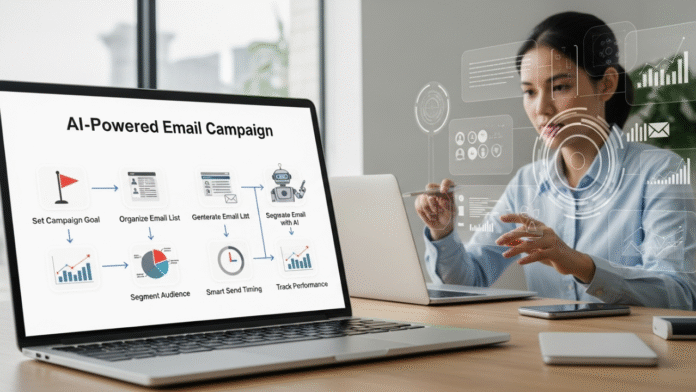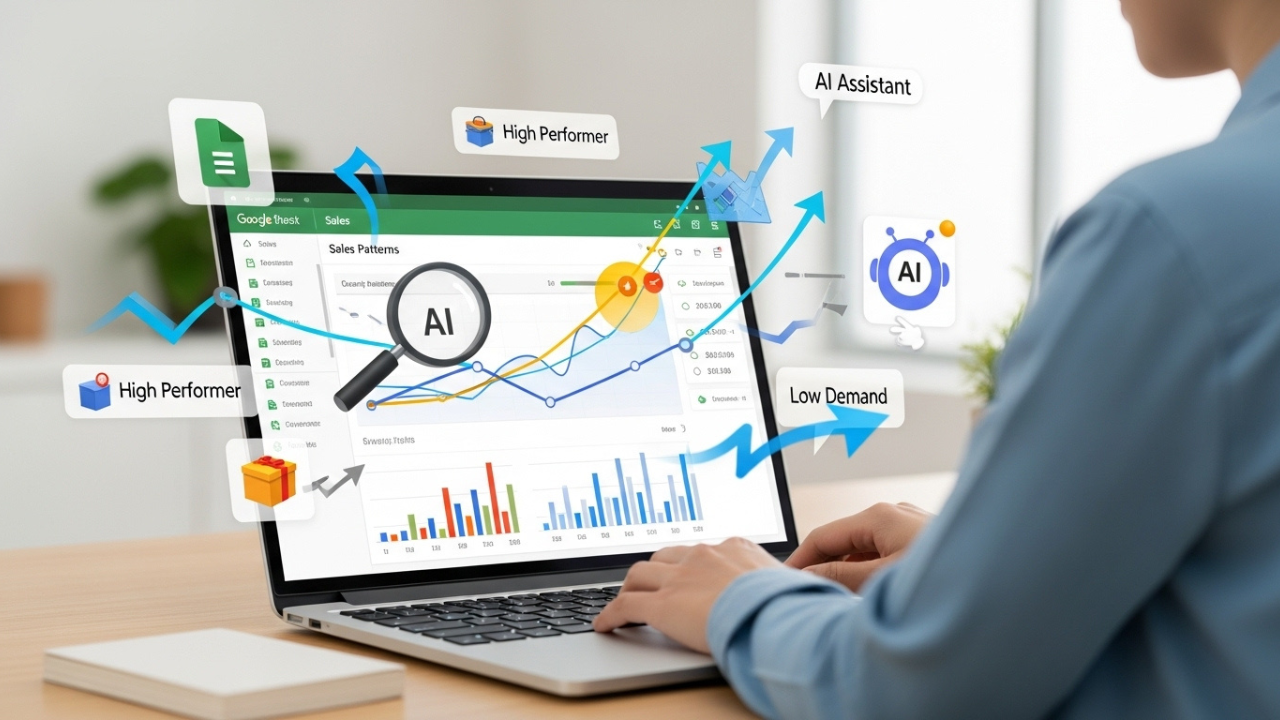You Don’t Need to Be a Data Scientist: How to Analyze Sales Data with AI
Running a business means keeping up with numbers. Sales go up. Sales go down. Some products move fast. Others gather dust. But the problem isn’t collecting the data. It’s making sense of it. That’s where AI steps in. If you’re a seller tired of guessing which product will hit next or wondering why a certain week felt slow, this guide is written for you.
Let’s call you what you are — a smart seller. You already know your store, your customers, your products. What you want now is clarity. You want to use your sales data the way big brands do — to guide better choices. But you don’t have a data science team or hours to dig into spreadsheets. The good news? You don’t need one.
What Is Sales Data and Why It’s Often Missed
Sales data is more than a list of what you sold. It’s the story of your business. Every line in your spreadsheet will inform you of what people desire, at which time they want them, what price they are ready to pay, and who they are. However, when the data is just lying shelved, it is like an unread book.
Most sellers track the basics — revenue, order count, top products. But real insights come from digging deeper. What time of day are most purchases made? Which customers come back? Which are the slowing products categories? Such are the questions that can be answered fast and clearly with the help of AI.
How AI Helps Understand Sales Data
AI isn’t a robot behind a screen. It’s a set of tools that learn from your data. Think of it as a very fast assistant. You feed it numbers and it shows you patterns, answers, and trends. It can look at thousands of transactions in seconds and tell you which product is likely to drop in demand next month.
Even basic AI tools — like smart spreadsheet add-ons or built-in analytics features — can make a difference. You don’t have to use something complex. You can start with what you already have.
Say you use Google Sheets. You can connect it with an AI assistant to ask questions like, “Which week did we lose the most sales?” or “What’s our most consistent product by revenue?” It will find the answer without you needing to build a formula.
Step-by-Step: How to Use AI to Analyze Your Sales Data
Step 1: Collect the Right Data
You probably already have it. Your sales platform — whether it’s Shopify, WooCommerce, Square, or Stripe — lets you download reports. You may also have customer data in your email platform or CRM. Begin with your list of transactions, names of products, date of sale, and ID of the customers.
Step 2: Choose an AI Tool
There are numerous of them. In case you feel at ease with spreadsheets, attempt to integrate Google Sheets and GPT-based tools. When you have a dashboard tool, such as Zoho Analytics, Plecto, or Salesforce, you need to check whether it has the AI option. These tools already know how to read sales data — they just need you to ask the right questions.
Step 3: Ask Questions
It does not require deep thinking. Artificially intelligent assistants should be treate as intelligent associates. Try questions like:
- Which products sold the most last month?
- What’s our average sale value?
- Are there any patterns in our weekly revenue?
The key is to ask things that help you make a decision. You’re not looking for trivia.
Step 4: Read, Reflect, React
The AI will give you charts, answers, or summaries. Don’t just read them — do something. If a product isn’t moving, cut the order size. If a segment of customers buys regularly, create a loyalty offer. This is where sales data becomes sales action.
Step 5: Review Often
AI works best when used regularly. Do not consider it a once-in-a-lifetime report. Make it a reality to check your numbers weekly or monthly.
Ask new questions. Follow up on actions. Sales change. Customers change. AI can help you stay ahead of that change.
A True Story: How Real Sellers Use AI
There’s a boutique owner named Karen. She sells home goods online. For months, her sales felt stuck. She was making money but didn’t know which products were driving growth.
She used an AI plugin on her Google Sheets. It showed that 70% of her orders came from five products — and one product was being returned 30% of the time. That single insight helped her remove the low-performing item, push the high sellers harder, and offer a bundle that increased her average order size.
She didn’t need a consultant. She didn’t need a full team. Just her data, a question, and a tool that answered.
Quick Reference Table: AI Uses in Sales Data
| Sales Task | AI Function | Outcome |
|---|---|---|
| Top Product Discovery | Pattern recognition | Focus inventory + promos |
| Customer Behavior Grouping | Clustering / segmentation | Better email or ad targeting |
| Sales Forecasting | Predictive models | Inventory and budget planning |
| Trend Analysis | Time series detection | Know when to launch or scale |
| Report Writing | Natural language generation | Easy-to-share team updates |
Scaling Your Sales Analysis with AI
Building an Automated Sales Analysis System
Now that you’ve seen how AI can bring order to your sales data, it’s time to scale. Automation is your next step. Instead of checking reports manually, smart sellers set up automated systems that do it for them. Imagine getting a message every Monday showing top-performing products and customers who haven’t ordered in 30 days. That’s possible with the right setup.
Use automation platforms like Zapier or Make.com to connect your sales platform to a reporting tool or your email inbox. For example, every time a new order is made, the data can be added to a live Google Sheet and an alert can be sent to your phone. AI then scans the sheet for trends. No spreadsheets to open. No emails to chase.
Advanced AI Use Cases That Work
Predictive Reordering
AI can help you forecast what inventory you’ll need next month. It reads past sales and current trends, then suggests quantities to order. If you’ve ever run out of a hot item during a sale, you’ll appreciate this. You can even set AI to warn you when inventory falls below a certain level.
Customer Churn Alerts
Losing regular customers hurts more than you think. AI can flag customers who haven’t ordered in a while. This gives you a chance to reach out before they disappear for good. A short email or discount can turn that around.
Pricing Insights
Not sure if your price is helping or hurting sales? AI can analyze product pricing history and customer behavior to tell you what price drives the most conversions. It doesn’t guess — it looks at the facts.
Mistakes to Avoid When Using AI for Sales
Using Dirty Data
If your sales reports are full of typos, blanks, or outdated products, AI will struggle. Always clean your data first. Remove old entries, check for duplicates, and standardize product names.
Relying Only on the AI
AI is a tool, not a replacement for your judgment. Use it to guide decisions, not make them for you. If a product is low in sales but important to your brand identity, keep it. Trust your insight, too.
Forgetting to Test Outputs
Always check what AI suggests. Just like people, it can misunderstand the input. Make sure reports and suggestions match what you expect. If something seems off, adjust the data or prompts.
How to Keep Improving
Sales trends shift. What works this month may not work next quarter. So keep asking new questions. Look at different views — weekly, monthly, seasonally. AI adapts as your business grows. The more you use it, the better it gets.
Also, talk to your team. If you have staff, include them in the process. Ask them what are the questions they would have liked to have answered about the sales. It is at shop floor level where often the best ideas can be found rather than at the board room.
Planning Your AI Roadmap
Start with one habit. Maybe it’s checking a weekly AI report. Then expand. Automate your inventory alerts. Add a churn detection workflow. Create monthly performance summaries you can share with your accountant or business partner.
Make a list of tools you want to try. Make.com, Airtable, Notion AI, Looker, and even Excel with AI plugins — they all have strengths. Test them. Stick with the ones that give you speed and clarity.
My Opinion
You don’t need to be a data expert to use AI. You just need to care about your numbers and want to make better use of them. That’s what makes you a smart seller.
AI does not end the art of sales, but it provides you with more powerful tools. There are tools that aid you to identify what is working, correct what is not and be ready with what is about to approach. Start simple. Stay consistent. Grow with confidence.



